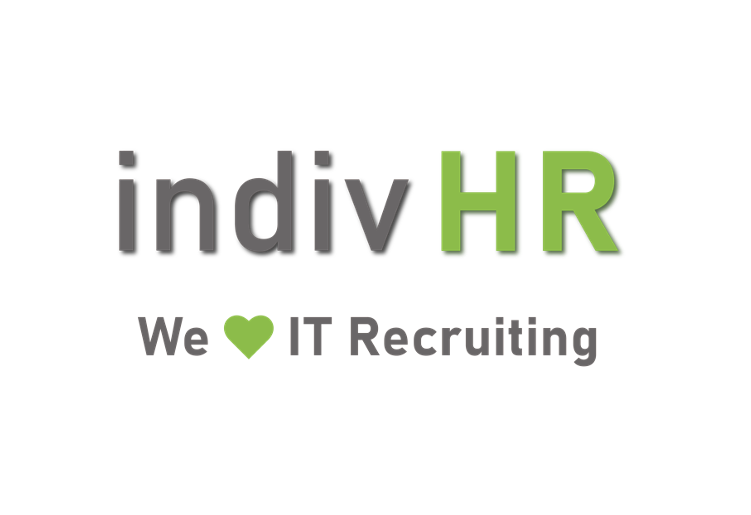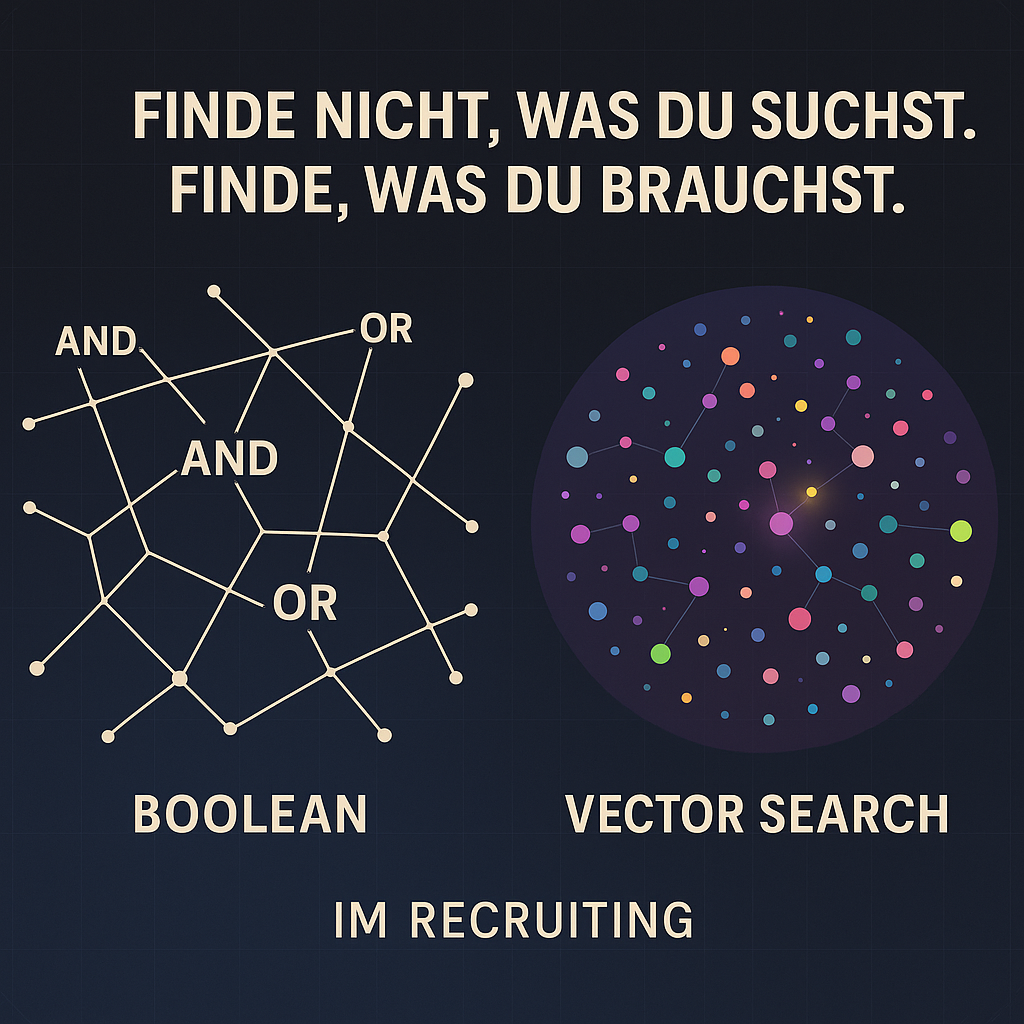Boolean was yesterday. Today you need a system.
Many teams still believe that sourcing is a search field - plus a bit of Boolean. The reality: The best candidates don't write what you're looking for.
They do not post on job boards, do not use classic titles and do not apply via portals.
They work. And leave digital traces - you just need to know how to make them visible.
Welcome to Recruiting 2026.
1. why classic search masks are no longer enough
Typical scenario:
You type "DevOps Engineer" AND Kubernetes AND AWS in LinkedIn Recruiter - and get:
-
90 % generic buzzword profiles
-
Many irrelevant sales people with a "cloud" connection
-
numerous employer pages, etc., which are not relevant for finding CVs
The problem: Boolean searches exactly - but not intelligently.
Vector Search, on the other hand, searches close to meaning - and discovers profiles that traditional systems overlook.
2026 you need:
-
semantic understanding
-
Stack expertise
-
Prompt logic instead of keyword templates
2. tech talents do not move in databases, but in communities
Recognising modern sourcing strategies:
CV databases and LinkedIn are only a small part of the market.
Where relevant traces are created:
-
GitHub: Those who really develop leave code behind
-
Dev.to, Hashnode: Those who think complexly write about it
-
Reddit, DiscordWho discusses, thinks along
Example:
A cloud engineer who writes Helm charts for Kubernetes doesn't use the term "DevOps" - but he leaves behind values.yaml-files on GitHub.
Finding instead of searching means: platform understanding + tool expertise + linguistically clean prompts.
3. what a modern sourcing strategy 2026 really needs
Forget "the one perfect Boolean string".
You need a well thought-out setup:
-
Semantic search - via Vector Search, on an embedding basis
-
Prompt competence - you need to know, like you request the right systems
-
Tech stack analysis - What do tools like Pulumi, ArgoCD, YAML really say about candidates?
-
Community monitoring - who regularly writes, likes open issues or comments on architectural decisions?
📌 Important:
Sourcing 2025 is not data protection free!
We at indivHR pay strict attention to this, only analyse publicly available datae.g. GitHub profiles, blog articles or stack activities.
No address research, no telephone numbers, no e-mail hunting.
Everything that we find is due to the candidates shared publicly - and can therefore be used in compliance with the GDPR.
4. how indivHR works: strategy instead of search mask
At indivHR we work not with sourcing tools - but with a well thought-out system.
We use:
-
Semantic searches with vector logic
-
Structured prompt engineering
-
Context-related community monitoring
Example:
For a GitOps-related DevOps role in Munich we analyse:
-
GitHub activities for ArgoCD and Helm
-
Blog posts on CI/CD processes
-
Stack trends (e.g. Pulumi vs. Terraform)
Our search prompts are not "DevOps AND Kubernetes" - but for example:
"Cloud-native engineer automating deployments via code. Focus: GitOps, CI/CD, YAML workflows. Munich area."
The effect: We find profiles with real project examples - not just buzzword CVs.
5. what you need now: roles, mindset & processes
Recruiting teams need Clear roles & competencesif they want to remain fit for the future:
-
Prompt architect:in - creates sophisticated semantic queries
-
Tech-Scout - Recognises stack signals, evaluates relevance
-
Outreach professional - writes contextualised messages with project reference
This is the only way to create a system that is not a search mask, but a strategy.
If your team is currently:
-
only finds the same profiles again and again,
-
with more and more outreach gets less and less response,
-
and has no explanation as to why others occupy faster -
👉 Then now is the right time to set yourself up for 2026.





